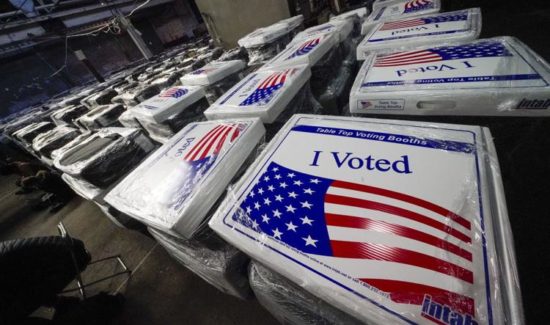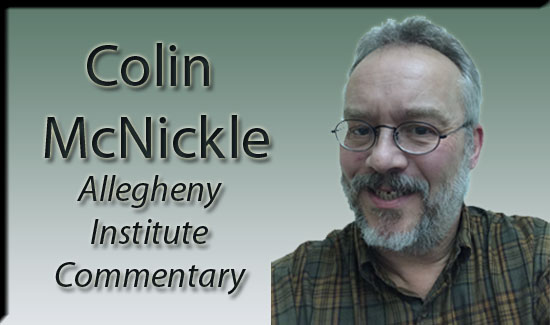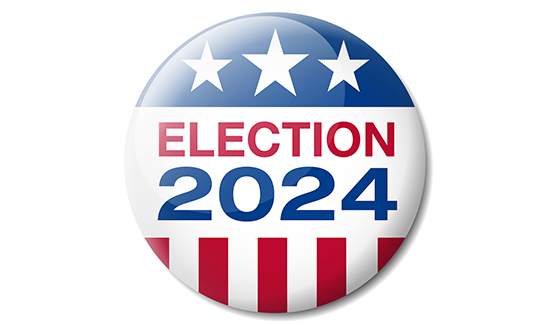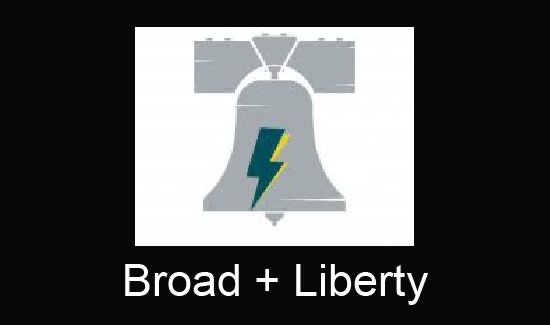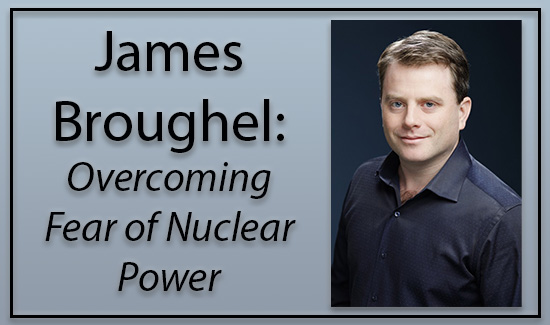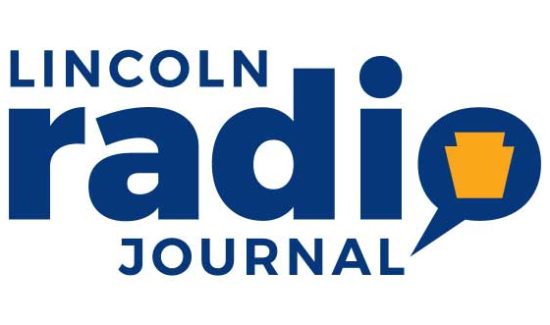Future of State-Owned Universities
When Pennsylvania assets and advantages are assayed, our abundance of colleges and universities is high on the list. Private and public institutions, located in big cities, sprawling suburbs, and small communities, are highly slotted in numerous qualitative rankings. Naturally, when the future of an institution or a group of institutions seems in jeopardy, a lot of public and official handwringing results, due to the substantial academic and economic consequences.
Sadly, this is not a hypothetical circumstance for mulling at leisure. For such is the worrisome situation confronting the fourteen universities comprising the State System of Higher Education, squeezed by sharp funding shortfalls and enrollment declines. In charting the future of higher education in our Commonwealth, working from policy and economic standpoints, closing one or more of the fourteen public universities would surely not be a leading recommendation. So there is a measure of relief that a recent study did not yield a closure recommendation. Of course, relief does not equal remedy.
Serious challenges remain. Steady drops in the state share of funding and a precipitous six-year drop in enrollment have undermined the financial underpinnings of the universities. The public sees increasing tuition and fees juxtaposed with rising concerns about the relevancy and viability of several of the universities. The reputation of these assets takes a hit, accelerating concern. The alarm sounded early in the year by the departing chancellor undoubtedly came as something of a shock to those who have been watching the physical growth and development taking place on most campuses.
The enrollment decline is ironic, because in many of the state universities the academic offerings are stronger than ever. The opportunities for students â€" research projects, internships, study and service trips â€" are remarkable in scope and learning value. The hard reality of fewer students warrants fixes well beyond better marketing. (However, just to interject a bit of perspective into the discussion, it is useful to remember how much larger enrollment numbers are today in contrast to those when the system was forged early in the 1980s.)
Not that crisis ever comes at a convenient juncture, but this problem is boiling into broad view just as the political waters are particularly roiled. Underinformed or uninformed critiques of higher education abound, and public universities have neither Ivy League prestige nor prodigious endowments to draw upon in defense. The eagerness with which some decisionmakers greeted the prospect of a couple of schools closing or being converted into something else is disconcerting. Heavy policy lifting is needed to restore the health of the system and uplift the prospects of several struggling universities. That requires the participation of both parties and those on all points of the political philosophy spectrum.
What would be lost if one (or more) of the state universities closes down? The universities are primary avenues of aspiration. We still find an astonishing number of students who are first-generation degree seekers. Nor is this a crisis of community relevancy; the contributions of the schools have taken on greater value as regional connections have multiplied and strengthened. Maybe the operating model is a bit shopworn, but the purpose and the access have not diminished.
Periodic economic impact assessments measure the positive ripple effects these schools have on their regions. That means the reverse will be true. Closing a school or two is going to negatively ripple across those same regions. This need not be an unavoidable fate. There is only a death spiral ahead if the status quo is desperately clung to.
Fortunately, turnaround does not come from a cold standing start. Many of the campuses are showing signs of the same sort of remarkable diversity that Pennsylvania communities are. A contingent of Saudi students attending Shippensburg University gives a fascinating glimpse of this change. Just as these schools can no longer be typecast as too ethnically narrow, they cannot be written off as incubators of liberalism. Because of the accountability public universities must satisfy, they cannot and do not operate in isolation from the values and expectations of the regions in which they are located, or the Commonwealth as a whole. To depict any of the fourteen as Cal Berkeley, East Coast is a radical misrepresentation.
Naturally, a variety of patches and more far-reaching realignments are being floated to deal with the problem.
As is true with every policy debate, money is inescapably central. It has always been something of a mystery that funding for public education is the state budget Holy Grail for K-12, then sort of drops from sight beyond that. With the mountain of studies documenting what post-secondary education does for job opportunities and earning power, how can the compelling battle cry of investing in kids run out of energy for those eighteen or older? How far the percentage share of state funding has fallen is really hard to square with the reality these are state-owned universities, not some tenuously connected institutions at the far end of defensible spending priorities.
At the same time, it is incorrect to believe and misleading to assert that more money is the answer to all difficulties. More money does not automatically mean more students lining up at campus entrances. The demographic crunch was foreseen for some time, but was masked by a period of record applications because recession-impacted students were checking down from pricier institutions. If anything is to be said with absolute certainty, it is that demographic trends do not turn on a dime.
Student recruitment practices will need revamping in order to contend with the demographic challenges. During this year’s state budget hearings, legislators asked the state education secretary about possible remedies. One of his answers involved reaching out to out-of-state and global populations. Sensible, but a bit impolitic. Just a few weeks later, Penn State was heavily criticized when a study showed them successfully pursuing just that strategy. Squaring up practicality and politics is never easy in the education arena. Even so, the answer given by the education secretary hopscotches over several in-our-backyard solutions.
If someone identified a group of students who are intelligent, motivated, and eager for the chance to acquire the knowledge and skills to build a better life here in Pennsylvania, the immediate reaction is to go out and recruit them. Turns out there is such a group. The snag seems to be that they are undocumented kids, called dreamers. We must get past the irritated emotions that want to slam doors on these kids and instead tap into their potential as willing and capable contributors, just needing to be given a chance. For Pennsylvania, it is a relatively minor concession to allow them to pay in-state tuition rates. The old argument that they would be bumping Pennsylvania kids from slots in the schools never scored high in logic, but now is pretty much pointless in the face of declining enrollments.
Every legislative hearing about better meeting our obligations to the growing number of veterans features discussion about improving their access to education and training programs. State universities have put in place programs to address this, but most officials concede there is plenty of growth potential yet to realize. Again, here is a group of people who have proved their dedication and commitment in military service, and can bring these qualities to the classroom.
Then there is dual enrollment, where high school students can take credit courses at college campuses or receive instruction from professors in college-level courses. Programs have been running in parts of Pennsylvania for twenty years now. The evaluation is mixed, depending to an extent on how the program is structured and who provides the instruction. Some swear by it; some swear at it. But there is a body of experience on what works well. Certainly the imperative has increased for embracing broader use of dual enrollment. It can help students manage the cost of higher education, and it is a good recruiting tool for universities.
Granted, these steps do not add up to a complete solution, but why not begin with readily accessible moves in the right direction?
In an era that emphasizes economizing, a popular suggestion is sharing services. This is not a new notion, because combining functions such as procurement and finance was a chief rationale for creating the state system. But the aim now is for academic services. This concept is often suggested but too little tested among neighboring school districts. It runs smack into tradition, rivalries, and parochialism. The state universities have a greater obstacle in distance to consider for classroom experiences. While each of the schools is working on ways to incorporate distance learning into their programs, the uneven results from cybercharters indicate that being all-in on remote location instruction is something short of an all-purpose solution.
For years, many of the universities have engaged in productive collaboration to increase the instruction intensity level and enhance the employability of their graduates. That has been prompted in part by the high cost of technological and medical programs. In some cases, students receive opportunities at local industries and institutions. In others, as these facilities upgrade their machinery and technology, what is being replaced makes its way to the university. Students get quick access to equipment that might never fit into the acquisition budget otherwise. An added plus of these arrangements is they help faculty stay current with trends and advances in the marketplace. The key point is that the how and why of instruction are properly placed ahead of the where.
As state universities look for ways to rein in costs, there is a confounding problem they alone cannot solve. While on the one hand university leaders proudly proclaim the superb qualifications of their incoming classes, on the other hand they decry the increasing cost of the remedial instruction they must provide to compensate for what students are no longer mastering in high school. That this layer of additional responsibility has been put onto the state universities seems not to be acknowledged in funding decisions, much less factored in. (The reasons for why this unacceptable state of affairs exists would require a separate dissertation.)
Some decisionmakers regard the distress of the universities as a long-sought chance to break the faculty union. Whether the first-ever faculty strike conducted last fall was a political miscalculation is a worthy subject for debate. The students paid once for that disruption, and should not pay again through punitive steps aimed at administrators or the union. To target the union for dismantling would effectively forfeit the sort of constructive cooperation needed for the transformation of the schools.
People who are involved with the operational lives of the campuses have seen how dramatically the role of faculty and their relationship with students have evolved over the past generation. The concentration on research and the presentation of student work in a wide variety of forums and competitions requires a considerable investment of time and guidance by faculty. The stereotype of faculty unions resolutely resisting change is pretty much an image from the past. Necessary changes in curriculum and instructional approach are happening because the faculties have become invested in change.
Without question, a thorough review of the system is in order. To make prudent choices on funding and policy going forward, everyone involved in or affected by the future of the universities deserves to have a clear picture of what is fact, what is fiction, what is hype, what is hysteria, what is constructive, and what is counterproductive. On this matter, the board of governors is too self-interested to serve as the sole judge and jury. A comprehensive review must candidly assess whether the SSHE superstructure still has a constructive and cost-effective role to play. It is up to state legislators, then, to undertake or to commission an independent look.
It does not take Sherlock Holmes to find sentiment on the campuses and among university advocates that the state system hierarchy has been a heavy brake on transformation. This compromises their ability to conduct the fair and far-reaching analysis the schools need. An independent review launched by the state legislature can be more probing in its inquiry and more trustworthy in its recommendations. Schools may need to pursue more distinctive identities and programs than the rigid system structure has ever allowed for. The system has always seemed tilted most heavily toward standardization, rather than encouraging the individuality of the schools. In these highly competitive times, that approach is losing ground on a lot of fronts. The factors that East Stroudsburg must take into account in competing for students differ from those of Lock Haven or Slippery Rock.
Several years ago, legislation was offered allowing individual schools to pull out of the system. It ran into a buzzsaw of opposition, but events now suggest the merit of the notion ran deeper than was initially apparent. Simply moving money around between the schools is not enough. In all likelihood, a Robin Hood style redistribution of funding will pull down the stronger schools long before it pulls up the weaker ones.
There is a strong push for more technical education to connect students with jobs, and that is certainly understandable given the cost of a four-year degree. The case has been made that some number of students who are being steered toward four-year colleges would be better served in other facilities. Those kinds of mismatches are not good for student or school.
But the misplaced belief that college is for everyone does not disprove the long-term economic advantage of post-secondary education. And the demands of the modern workplace are reinforcing the importance of college in an unexpected way. Employers frequently complain that workers lack critical thinking skills, just what a liberal arts education emphasizes and develops. Strengthening technical programs and bolstering community colleges are sensible steps in the current economy. But cannibalizing the programs and degrees at the state universities is shortsighted and counterproductive to hopes for recovering enrollment and recapturing educational momentum.
Inquiry should examine if we have the right number of state universities in the right places. Fourteen was never a master plan number of universities. State-owned status once was magical, but has lost its luster as the percentage of state contribution nosedived. Campus locations are a function of history, not the result of any timeless blueprint for distribution. It may be that regional economics and demographics dictate that one or more of the existing universities be converted into a different type of institution. This road runs in both directions, of course, so it may be that other institutions would benefit from a conversion into state universities. This is a complicated and traumatic process, to be sure, but no more than scrambling to fill the hole created if a school goes under.
Then there is the special case of Cheyney. On the one hand, it is hard to imagine a Pennsylvania future that does not have a place for Cheyney. On the other hand, the school has struggled for a long while, and considerable sums of money have been poured in without accomplishing a lasting turnaround. The graduation rates are abysmal and the enrollment drop there is particularly acute. History, significance, and tradition ultimately do not pay the bills. But they constitute a powerful argument against just disposing of the institution. All the educational and political firepower found in our Commonwealth surely can conceive of a mission or niche that will make the school a fresh magnet for drawing students. Recently issued task force recommendations offer possibilities, and warrant more consideration than the brusque dismissal some commentators gave them.
Debate over education issues always brings forth pious pronouncements about adjusting mission and increasing efficiency. Even the most profound and earnest soundbites are not going to do the job here. Searching for scapegoats will only squander time and resources. Adjustments to law, funding, and most critically, attitudes are needed. Answers are available, if old assumptions and stereotypical thinking can be discarded. The universities must move beyond barnacle-encrusted approaches, and so should decisionmakers. It is useful to remind that these are state-owned universities. Credit for their successes and fault for their failures is ultimately with us, the taxpayers.
David A. Atkinson has a BA in Government and an MS in Mass Communications from Shippensburg University and is economically and emotionally invested in its future. He is also an Associate with The Susquehanna Valley Center.
Nothing contained here should be considered as an attempt to aid or hinder the passage of any legislation.
The views expressed here are those of the author and not necessarily those of The Susquehanna Valley Center.
717-471-3513 – [email protected] – www.susvalleypolicy.org
Copyright © 2017 Susquehanna Valley Center for Public Policy, All rights reserved.
You are receiving this email because you signed up on our website.
Our mailing address is:
Susquehanna Valley Center for Public Policy
P.O. Box 338
Hershey, PA 17033


